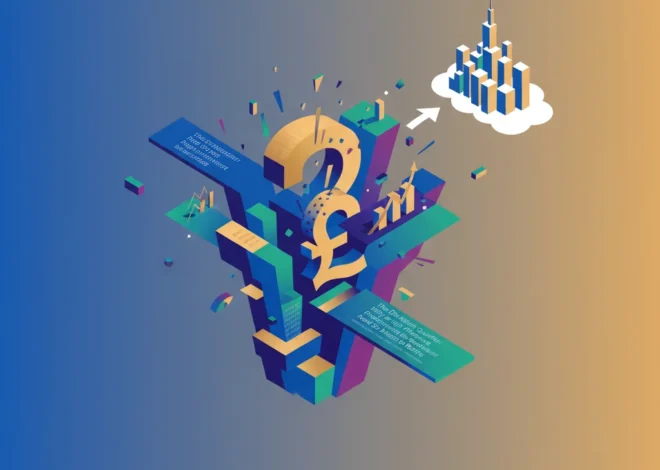
Beyond the Balance Sheet: Unearthing the Psychological Allure of Gold
In the world of modern finance, we pride ourselves on rationality. We build complex algorithms for trading, rely on sophisticated economic models, and analyze terabytes of data to inform our investment decisions. Assets are valued based on cash flow, industrial utility, and their role in a diversified portfolio. Yet, one asset stubbornly defies purely logical explanation: gold.
For millennia, this shimmering yellow metal has captivated humanity, serving as a symbol of wealth, power, and permanence. Investors flock to it in times of crisis, central banks hoard it in their vaults, and cultures imbue it with deep-seated significance. The standard financial arguments—that it’s a hedge against inflation or a safe-haven asset—are valid, but do they tell the whole story? Do they truly explain the visceral, almost primal, attraction we have to it?
A fascinating and unconventional perspective, proposed in a letter to the Financial Times by Dr. Konstantinos Gravas of the University of Athens, suggests we must look deeper. Not into market charts or economic reports, but into the human subconscious. The theory posits that our enduring obsession with gold isn’t just about finance; it’s about psychology, rooted in the foundational theories of Sigmund Freud.
This article delves into that provocative idea, exploring how subconscious drives, ancient instincts, and psychoanalytic theory may be the hidden architects of gold’s unshakeable value in our global economy.
The Rational Case for Gold: A Solid but Incomplete Foundation
Before venturing into the subconscious, it’s essential to acknowledge the logical arguments that support gold’s role in finance and investing. For centuries, gold has been a cornerstone of the global banking and economic system. Its properties make it uniquely suited for this role:
- Durability and Divisibility: It doesn’t corrode or degrade, and it can be divided into smaller units without losing its intrinsic value.
- Scarcity: The total amount of gold is finite. According to the World Gold Council, around 212,582 tonnes of gold have been mined throughout history, and the supply increases by only 1-2% annually.
- Store of Value: Unlike fiat currencies, which can be devalued by inflation or government policy, gold has historically preserved purchasing power over long periods.
- Portfolio Diversification: Gold often exhibits a low or negative correlation to other asset classes like stocks and bonds, making it a valuable tool for mitigating risk in a volatile stock market.
Central banks are among the largest holders, with official holdings totaling over 35,000 metric tons. Their continued acquisition signals a deep-seated belief in gold’s role as a stabilizing force in the financial system. Yet, these rationales feel incomplete. They explain *what* gold does in a portfolio, but not *why* it holds such a powerful mystique that transcends its practical applications in trading and economics.
Freud in Your Portfolio: The Subconscious Link Between Gold and Wealth
This is where Dr. Gravas’s argument provides a compelling, if startling, new layer of understanding. He connects gold’s allure directly to Sigmund Freud’s theories on psychosexual development, specifically the “anal stage.” While this may initially sound bizarre, the underlying symbolism is powerful and surprisingly relevant to finance.
Freud theorized that during early childhood development (the anal stage), a child’s first experience with creating and controlling something of value is linked to their bodily functions. This early association, according to the theory, becomes deeply embedded in the subconscious. Later in life, this primal instinct is “sublimated”—a psychological process where primitive urges are transformed into socially acceptable, sophisticated behaviors. The childish desire to hold onto and value what one produces becomes the adult drive to accumulate and hoard wealth.
And what is the ultimate, archetypal symbol of hoarded wealth? Gold. The theory suggests our fascination with gold is a direct sublimation of these early, powerful subconscious associations with value, possession, and control.
To clarify this connection, consider the parallels between Freudian concepts and financial behaviors:
| Freudian Concept (Psychoanalytic) | Financial Behavior (Economic) |
|---|---|
| Anal Retentiveness | The impulse to hoard wealth, save excessively, and avoid spending. The “scarcity mindset” in investing. |
| Sublimation | Transforming the primal urge to possess into the sophisticated act of accumulating assets like gold bars, coins, and financial securities. |
| Symbolic Association | The subconscious equation of feces (the first “product” of value) with money and precious metals, as noted by Freud and his followers. |
| Need for Control | The desire for tangible, physical assets that one can hold and control, especially during times of uncertainty, mirroring a child’s first experiences with control. |
This psychoanalytic lens reframes gold not just as an asset, but as a psychological anchor. The “flight to safety” during a market crash becomes more than a rational portfolio adjustment; it’s an instinctual retreat to something tangibly, primally valuable. The gleam of a gold coin resonates with a part of our psyche that financial technology and abstract digital assets cannot reach.
From Ancient Empires to the Digital Age: Gold’s Enduring Mystique
History is replete with examples that support this idea of a quasi-religious devotion to gold. From the pharaohs of Egypt who were buried with it to ensure their status in the afterlife, to the Spanish conquistadors who crossed oceans in a feverish quest for “El Dorado,” the pursuit of gold has always been more than just an economic activity. It has been a crusade, an obsession that has shaped empires and defined eras.
This psychological weight carries into the modern era. When the Bretton Woods system collapsed in 1971, the U.S. severed the dollar’s direct convertibility to gold. Logically, gold could have faded into obscurity as just another commodity. Instead, its price soared. As currencies became pure fiat—backed only by government promise—the collective subconscious seemed to cry out for something real, something tangible. Gold filled that psychological void. A 2023 survey by the World Gold Council found that “it won’t lose its value in the long-term” was a key reason for consumer gold purchases, a testament to this deep-seated faith.
The Empty Classroom Economy: Why Falling School Rolls Are a Major Red Flag for the UK Economy
The Digital Unconscious: Can Blockchain Replicate Gold’s Primal Power?
The rise of financial technology and blockchain has introduced a new contender for the throne of “store of value”: Bitcoin, often dubbed “digital gold.” The comparison is compelling. Both are scarce, exist outside the traditional banking system, and require “mining” to be brought into circulation.
However, the Freudian perspective reveals a critical difference. Bitcoin’s value proposition is almost entirely logical and technological. It is based on cryptography, decentralized networks, and a transparent ledger. It appeals to our rational minds—a brilliant solution to the problem of digital trust. But does it appeal to our subconscious?
Gold’s value is multi-layered. It has an industrial and financial logic, but it is supercharged by millennia of cultural, historical, and—if we accept the theory—psychological programming. It is physical. You can hold it, feel its weight, and see its luster. This tangibility is crucial, as it connects directly to the primal instincts of possession and control. Bitcoin, for all its technological elegance, remains an abstract entry on a digital ledger. It has not yet been woven into our collective unconscious. While fintech can create digital scarcity, it cannot yet manufacture psychological resonance that has been built over thousands of years.
What This Means for the Modern Investor
Understanding the psychological dimension of gold offers a profound advantage for investors, traders, and business leaders. It encourages a more holistic view of the market, one that acknowledges the power of sentiment, fear, and deep-seated belief systems.
- Acknowledge Irrationality: Recognize that markets are not always rational. The enduring value of gold is a powerful reminder that collective belief can be as influential as any economic indicator.
- Appreciate Tangibility: In an increasingly digital world, the psychological comfort of tangible assets should not be underestimated. This helps explain why gold performs well in times of extreme uncertainty, when faith in abstract financial systems wavers.
- Diversify Beyond the Numbers: When building a portfolio, consider not just the statistical correlations but also the psychological roles different assets play. Gold serves as a psychological hedge as much as a financial one.
Crypto's Identity Crisis: Beyond the "Unseemly Land Grab" to a New Financial Future
Conclusion: The Gold Standard of the Psyche
The true genius of gold may not lie in its physical properties, but in its unique ability to bridge the gap between our rational economic world and our deep, often hidden, psychological landscape. While we build ever more complex financial instruments and fintech platforms, gold remains a powerful constant—an anchor to a sense of permanence and value that is both ancient and deeply human.
Dr. Gravas’s Freudian interpretation challenges us to look beyond the charts and see the subconscious forces at play in our economy. It suggests that in finance, as in life, we are driven by more than just logic. Our most enduring financial decisions may be influenced by echoes from our earliest experiences, making gold not just a precious metal, but a psychological artifact—the true gold standard of the human psyche.


